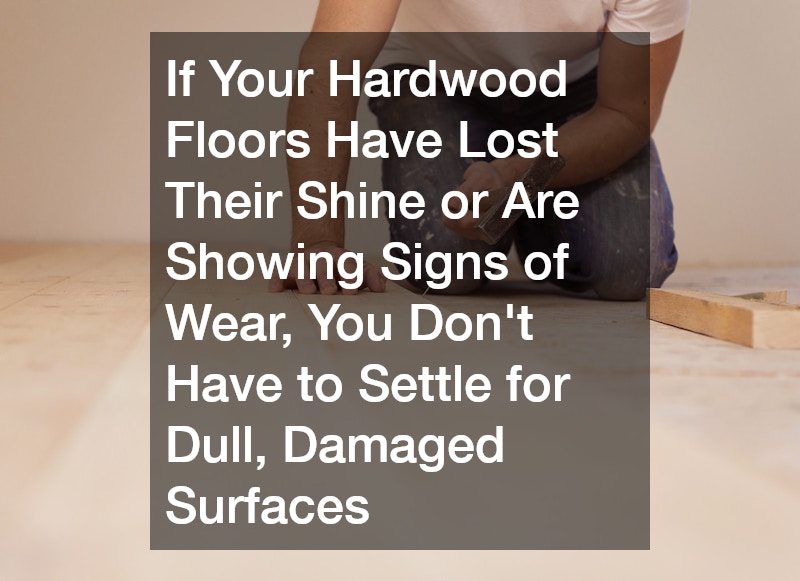Transform Your Home The Art of Hardwood Flooring Refinishing
There’s something undeniably special about hardwood flooring. Its natural warmth, rich texture, and timeless appeal make it one of the most sought-after flooring choices for homeowners. However, like any surface that endures daily foot traffic, hardwood floors can begin to look dull, scratched, or worn over time. The good news? You don’t need to replace them to bring back their beauty. With the right techniques and a little patience, hardwood flooring refinishing can restore your floors and dramatically transform your entire home.
What Is Hardwood Flooring Refinishing?
Hardwood flooring refinishing is the process of sanding down the top layer of your wood floor to remove old finishes, stains, and imperfections, and then applying a fresh coat of finish or stain. This not only rejuvenates the appearance of the wood but also adds a layer of protection against future damage. Whether your floors are suffering from water stains, pet scratches, or simply years of wear and tear, refinishing can give them a brand-new look without the cost of replacement.
In most cases, hardwood floors can be refinished multiple times throughout their lifespan, making it a sustainable and budget-friendly option for long-term floor care. Depending on the thickness of the wood and the extent of the damage, you can expect to refinish your floors every 7 to 10 years—or sooner if you notice significant wear.
Signs Your Floors Need Refinishing
Not every floor needs to be refinished at the first sign of a scratch. But there are telltale signs that it may be time to take action. If your floors have deep gouges, extensive surface damage, or discolored areas from sun exposure or water, refinishing is likely the best route. Another key indicator is if the finish has worn off entirely in high-traffic zones, leaving the wood vulnerable to staining and moisture damage.
You can also do a simple water test: place a few drops of water on the surface. If the water quickly soaks into the wood rather than beading up, it’s a sign the protective seal is gone and the floor is ready for refinishing.
The Refinishing Process
The process of hardwood flooring refinishing involves several key steps and usually takes several days from start to finish, depending on the size of the area and the products used. First, the floors must be cleared of all furniture, rugs, and debris. Then, the sanding begins. Professionals use large drum sanders and edge sanders to remove the existing finish and top layer of the wood, revealing a clean, raw surface underneath.
After sanding, the floors are cleaned thoroughly to remove dust and particles. At this stage, you can choose to apply a stain if you want to change the color of your floors. Once staining is complete, several coats of polyurethane or another durable sealant are applied to protect the surface and give the floors a desired sheen—whether that’s a glossy, satin, or matte finish.
The floors must then be allowed to cure properly, which can take a couple of days. During this time, it’s important to avoid heavy traffic or moving furniture across the surface.
The Benefits of Refinishing
Hardwood flooring refinishing offers several advantages beyond just aesthetic improvements. First and foremost, it adds to the longevity of your flooring. Rather than spending thousands on new materials and installation, refinishing allows you to work with the quality hardwood you already have.
Refinancing also boosts home value. Beautiful, well-maintained hardwood floors are a major selling point and can make your space feel brighter, cleaner, and more modern. For homeowners looking to sell, a fresh refinish can be a small investment with a significant return.
Additionally, refinishing helps maintain a healthier living environment. Over time, worn wood floors can trap dust and allergens in cracks or splinters. A smooth, sealed surface is easier to clean and better for overall air quality.
Why Hire a Professional?
While there are DIY kits available, hardwood flooring refinishing is a task best left to professionals. It requires specialised equipment, detailed knowledge of wood species, and experience in sanding and finishing techniques. Mistakes made during a DIY refinishing project—like uneven sanding or improper application of sealants—can lead to costly repairs or even irreversible damage.
A professional refinishing team can assess the condition of your floors, recommend the best products for your needs, and complete the job efficiently and cleanly. The result is a floor that not only looks stunning but also performs well for years to come.
If your hardwood floors have lost their shine or are showing signs of wear, you don’t have to settle for dull, damaged surfaces. With hardwood flooring refinishing, you can restore its beauty, enhance your home’s appeal, and protect one of your most valuable assets. It’s more than just a maintenance task—it’s an art form that brings out the natural character and charm of your living space. Whether you’re updating a single room or revitalizing your entire home, refinishing your floors is a smart, stylish, and rewarding investment.
.

